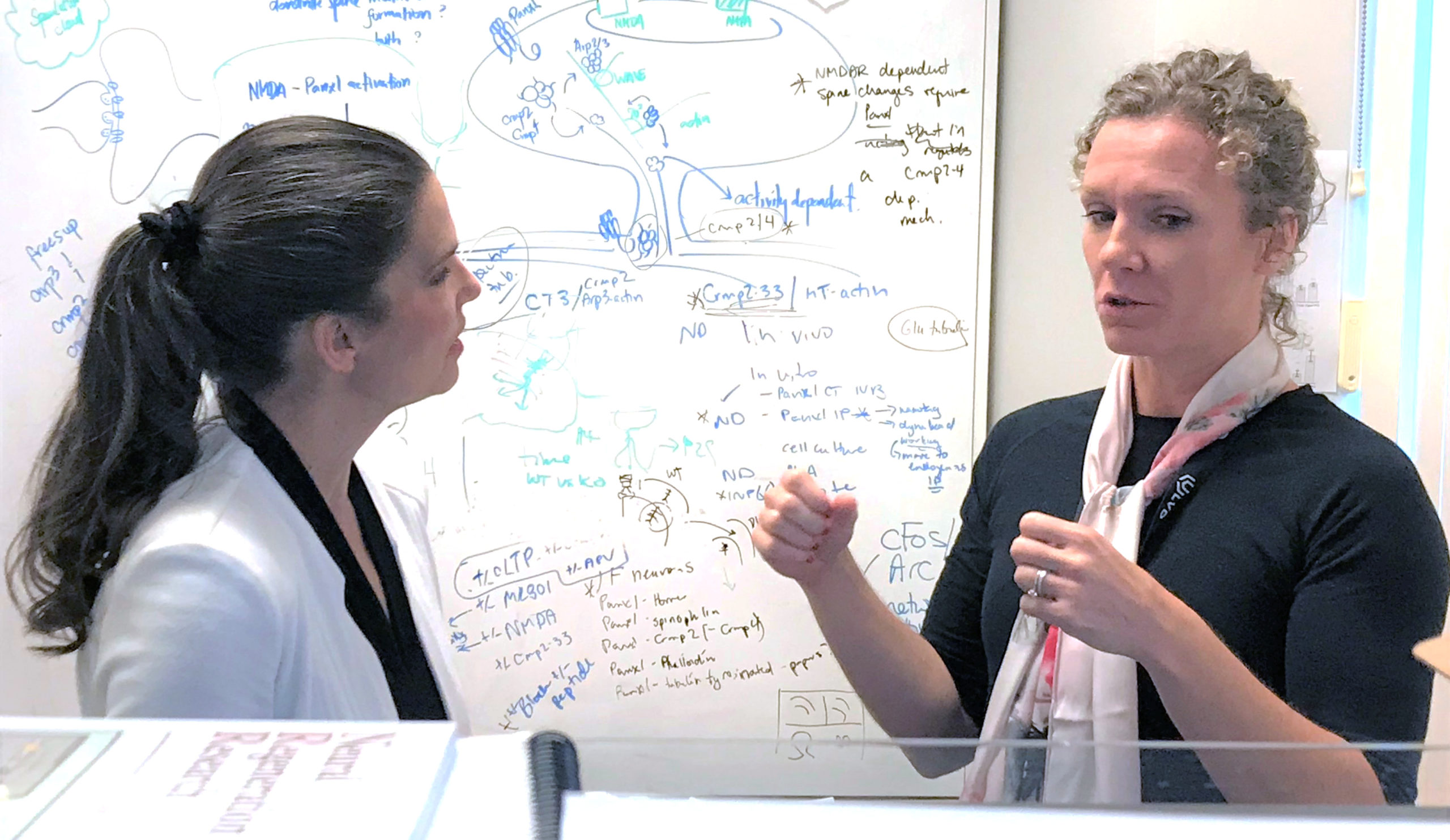What goes on in our brains after injury? MSFHR-funded researcher Dr. Swayne is finding out
24 September 2018

University of Victoria neuroscientist Dr. Leigh Anne Swayne studies how the cells in our brains grow and divide, and form connections to communicate with one another, or “cellular plasticity” in scientific terms. Swayne primarily focused on the complicated role that proteins called ion channels play in brain development, injury, and repair.
“After brain injury or stroke, neural stem cells divide and migrate to the site of the injury,” explains Swayne, an associate professor in the division of medical sciences. “We think this might be a partially failed attempt at repair, but currently we don’t understand exactly what triggers this to happen. If we did, we might be able to improve brain healing after injury.”
Another aspect of cellular plasticity that Swayne works on is the formation of connections between brain cells called neurons. A large body of work has shown that improper formation of connections between neurons underlies many neurological disorders including schizophrenia and autism spectrum disorders.
With support from a 2014 Scholar award, co-funded with the BC Schizophrenia Society Foundation, Swayne is working to better understand how an ion channel protein called Pannexin 1 regulates the formation of these neuronal connections.
The challenge faced by Swayne and her team is that proteins like Pannexin 1 don’t act in isolation. But how do you find out what other proteins are involved if you don’t know what to look for? That is where proteomics comes in.
A relatively young field of research, proteomics developed out of advances in genomics research over the past quarter of a century. While Dr. Michael Smith’s Nobel Prize winning site-directed mutagenesis technique allows researchers to manipulate DNA, proteomics lets you look at how those changes affect our proteins and learn more about how they function.
To better understand Pannexin 1, and study some of the factors that trigger brain healing, Swayne and her team called on the UVic Genome BC Proteomics Centre and the BC Proteomics Network (BCPN), which was funded through an 11-year $4.3M Technology/Methodology Platform award from MSFHR.
“The support of the BC Proteomics Centre and BCPN was essential to our research. Proteomics requires a large and very expensive piece of equipment to sort and analyze the proteins in any given sample. It’s true discovery research, and without it we wouldn’t have known where to start looking to understand more about Pannexin 1, the proteins it interacts with, and how these are linked to diseases like autism and schizophrenia,” says Swayne.
Ultimately, Swayne and her team are working to understand the mechanisms that underlie how the brain works in health and disease, and how we might be able to harness the potential of cellular plasticity for brain repair.





